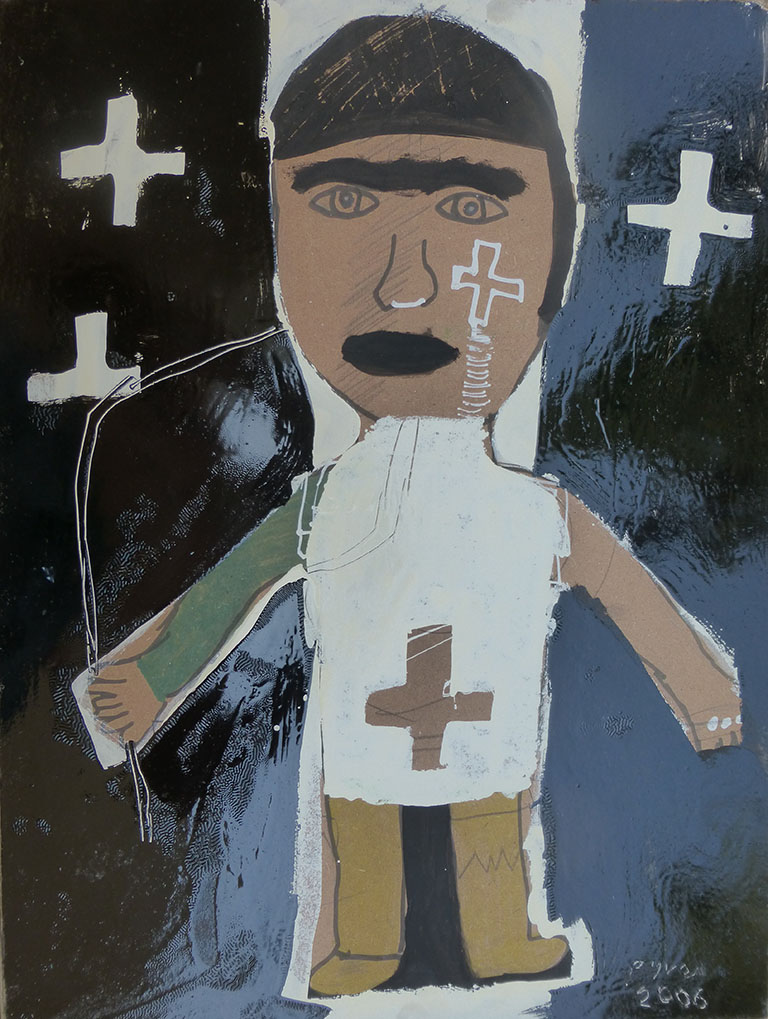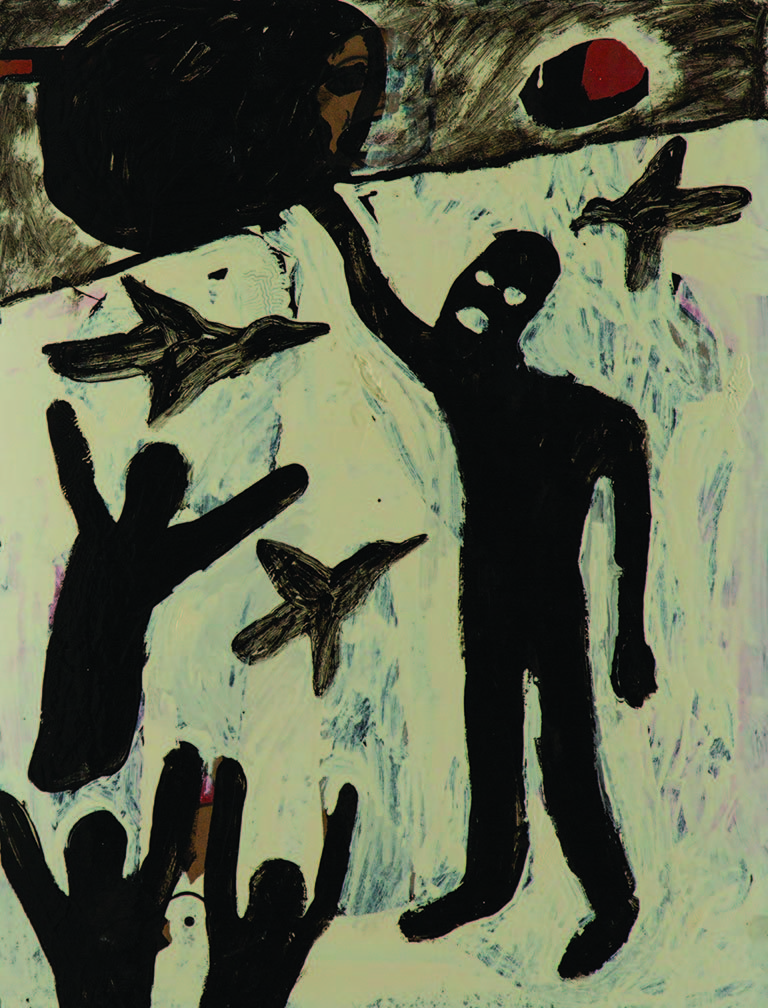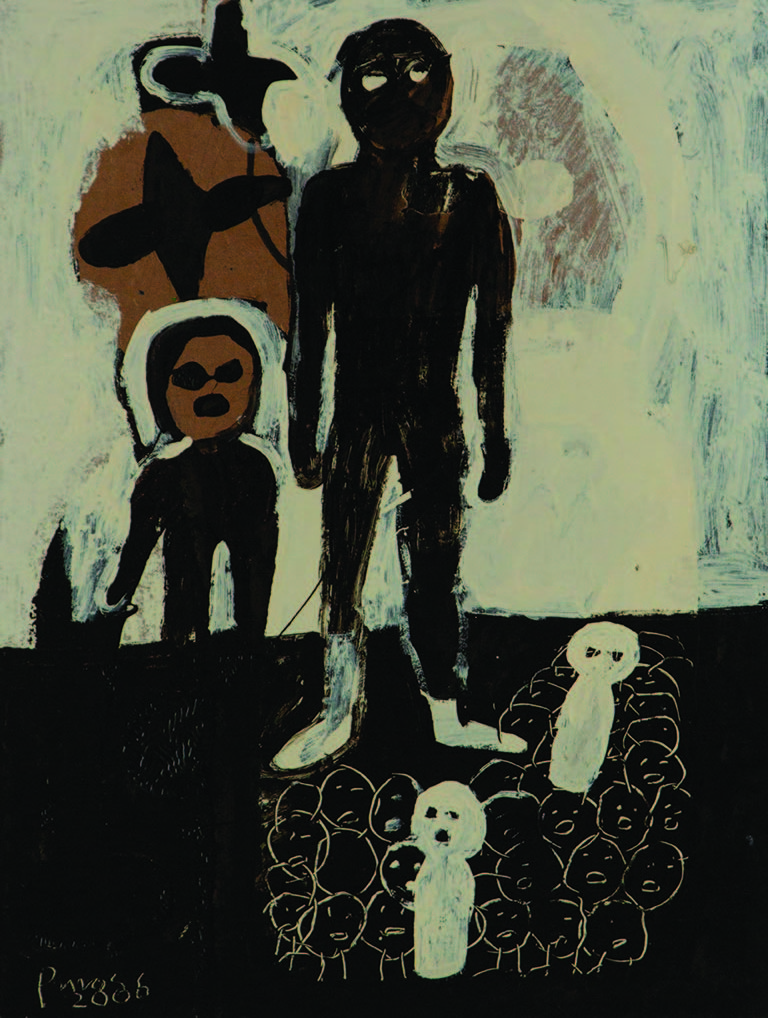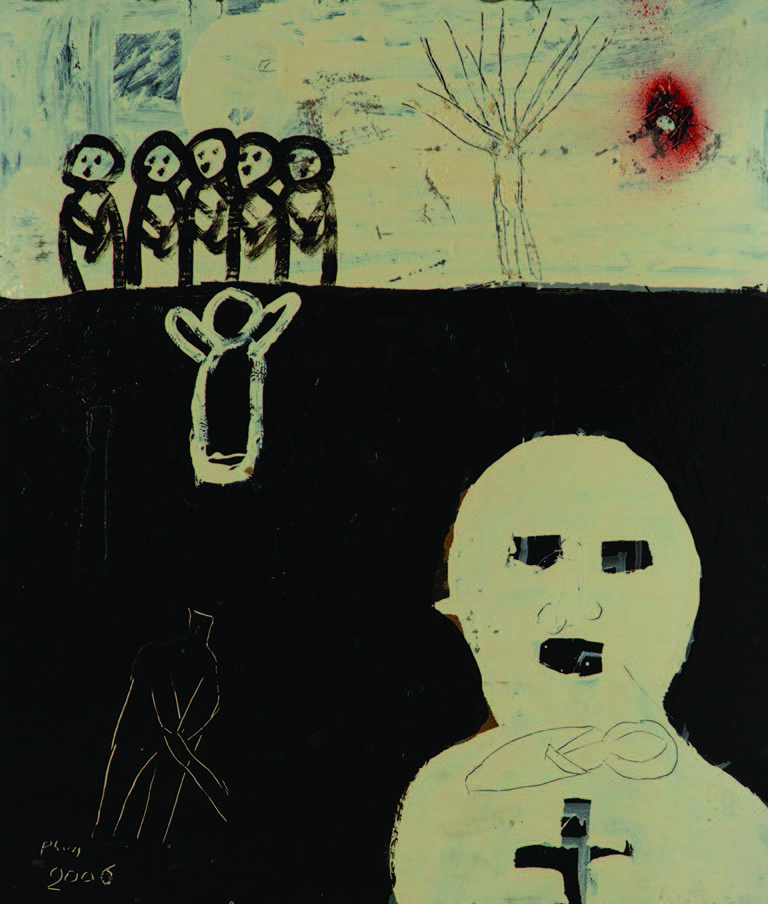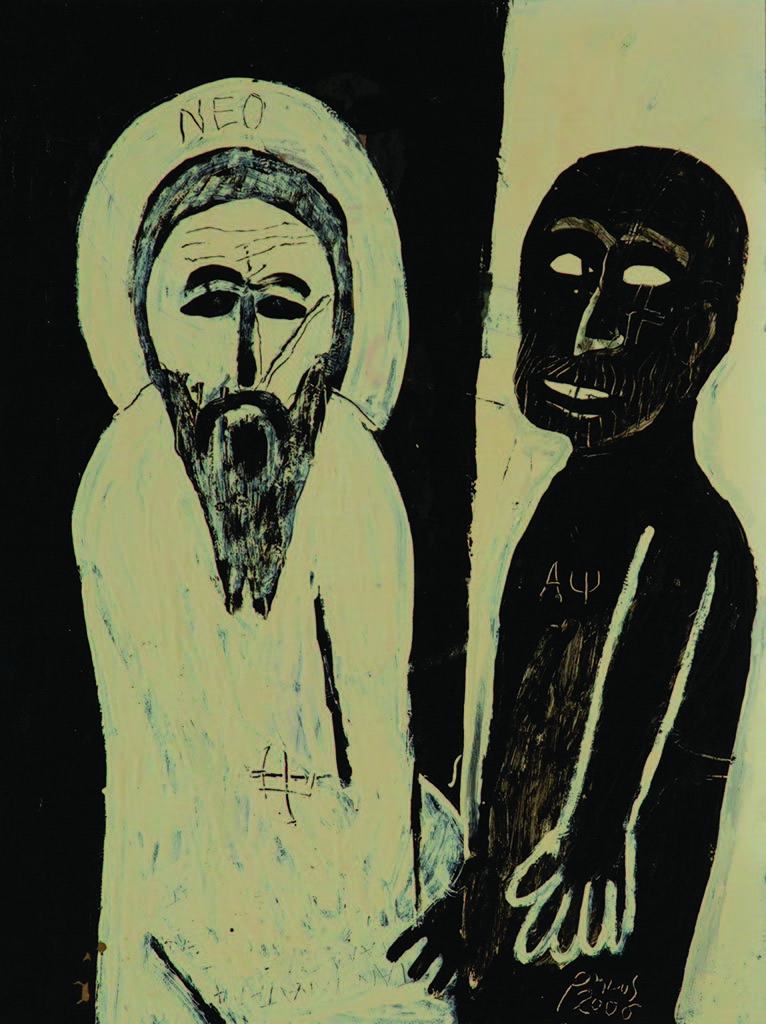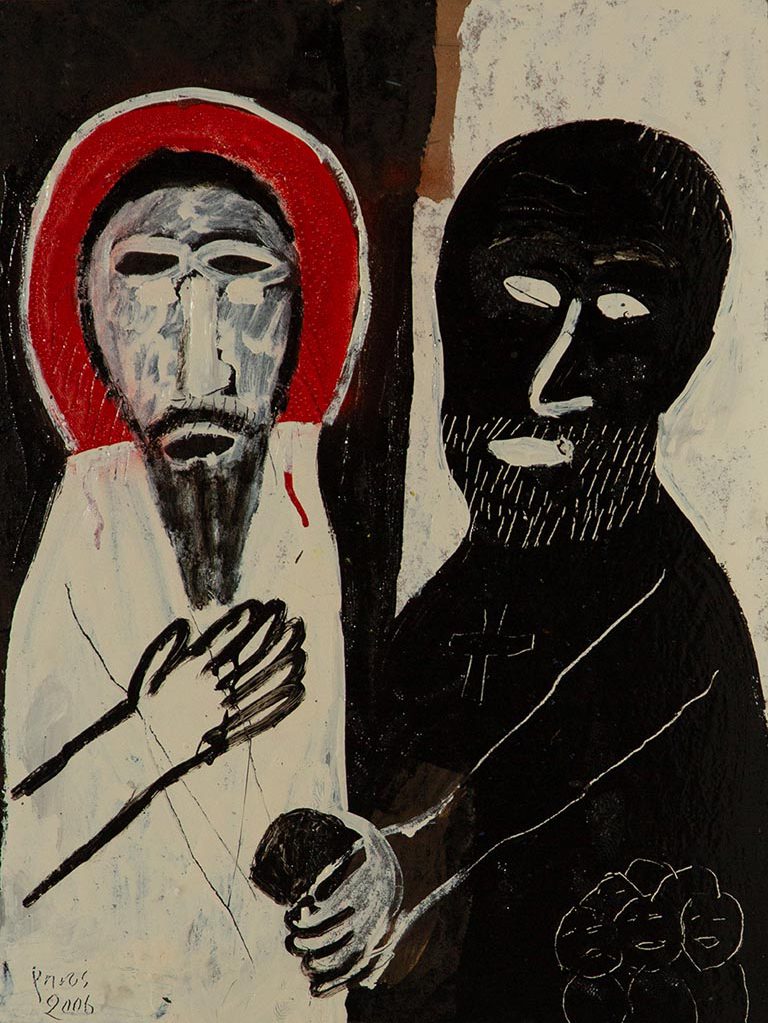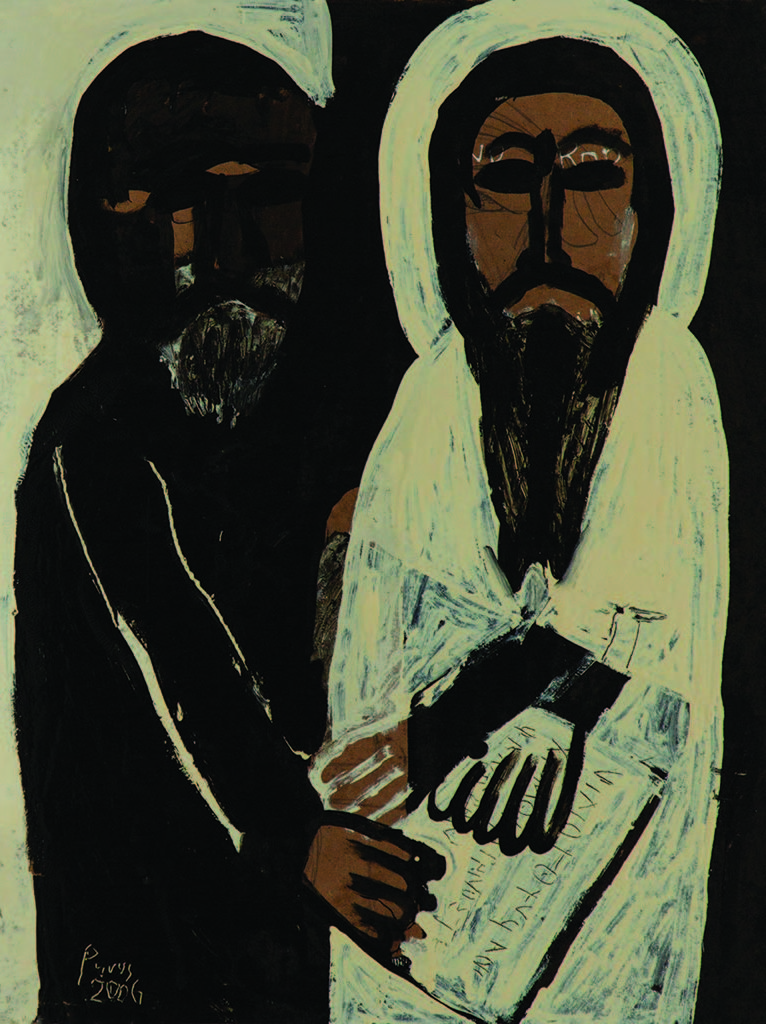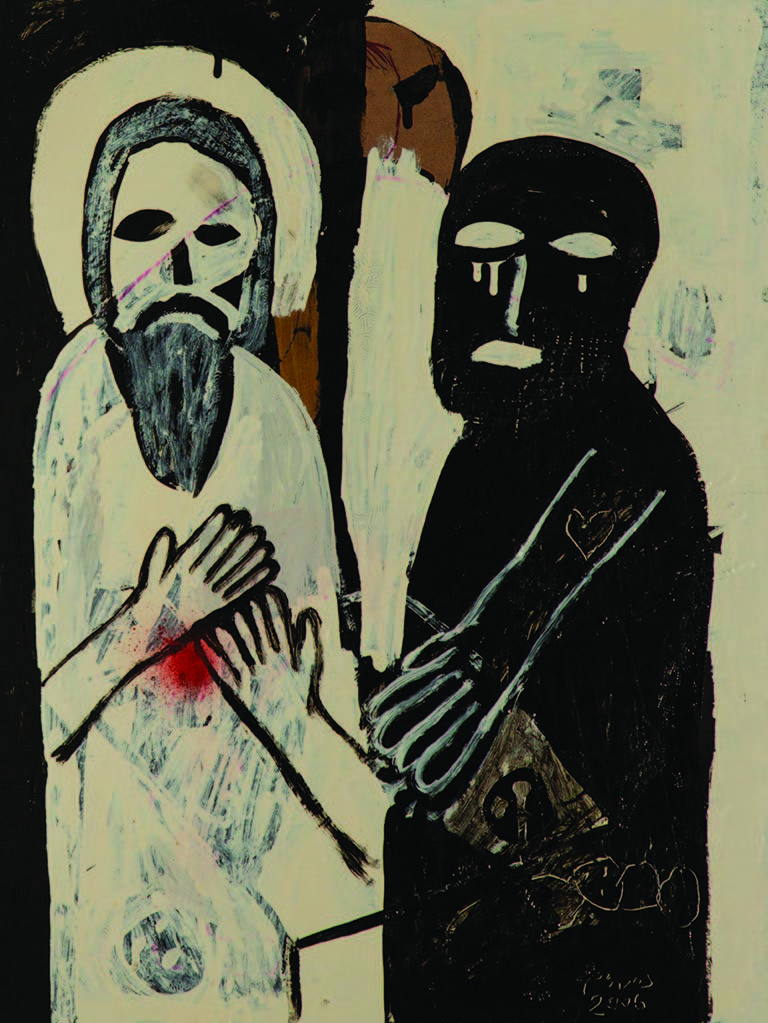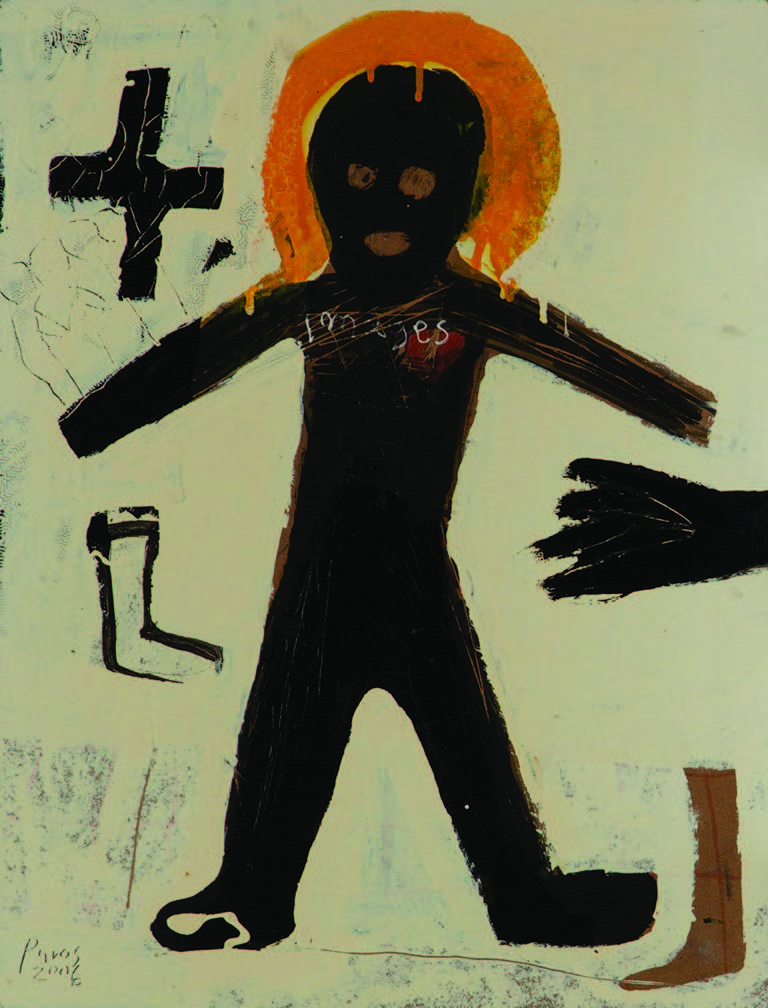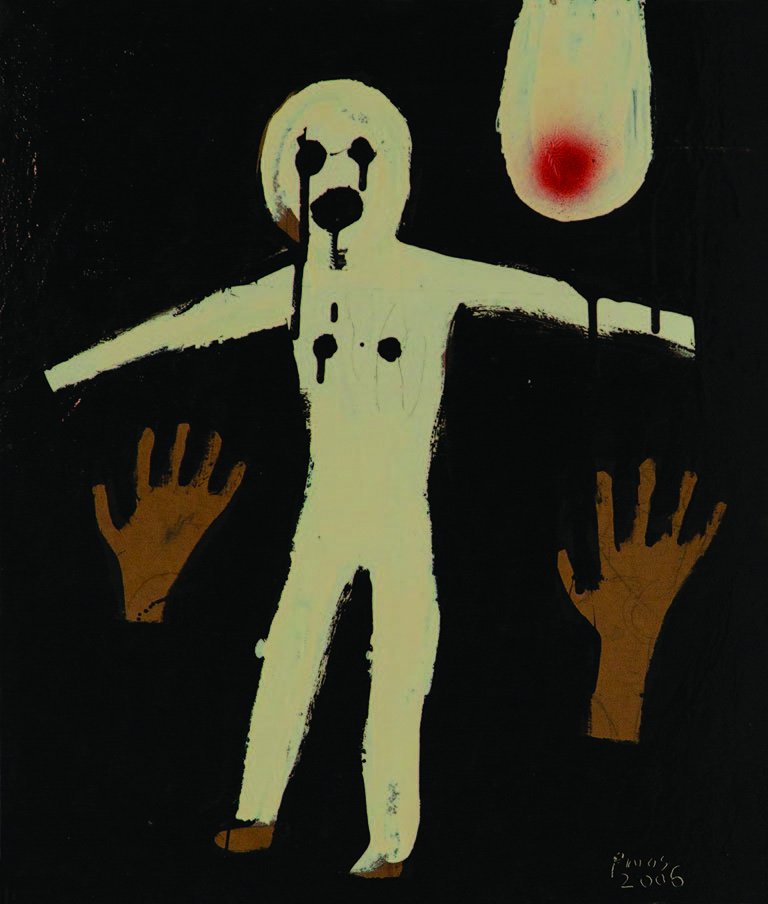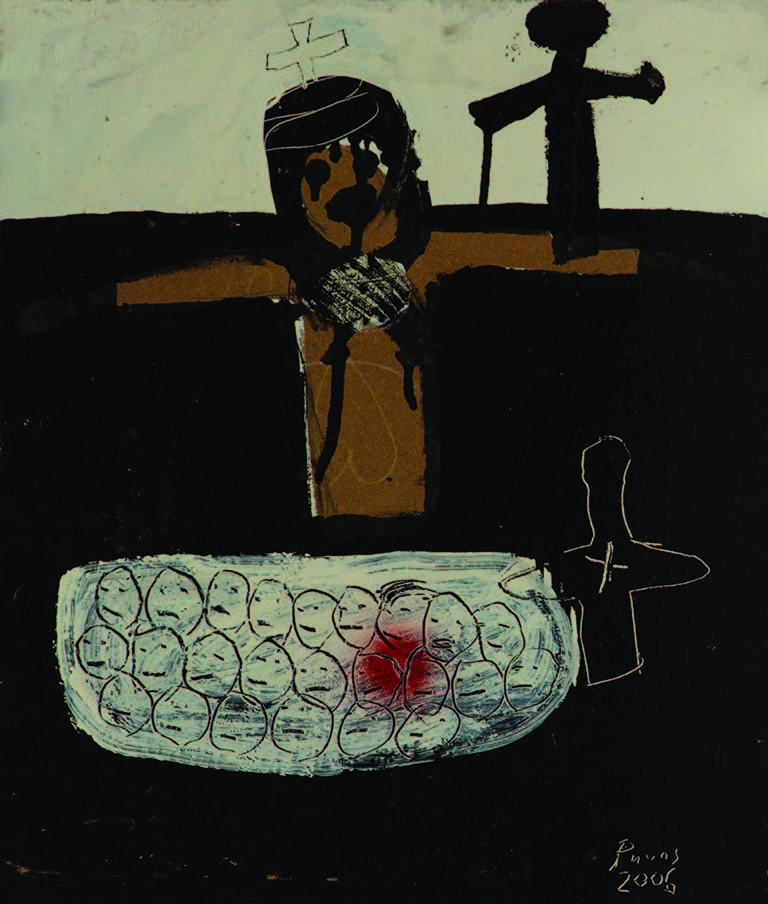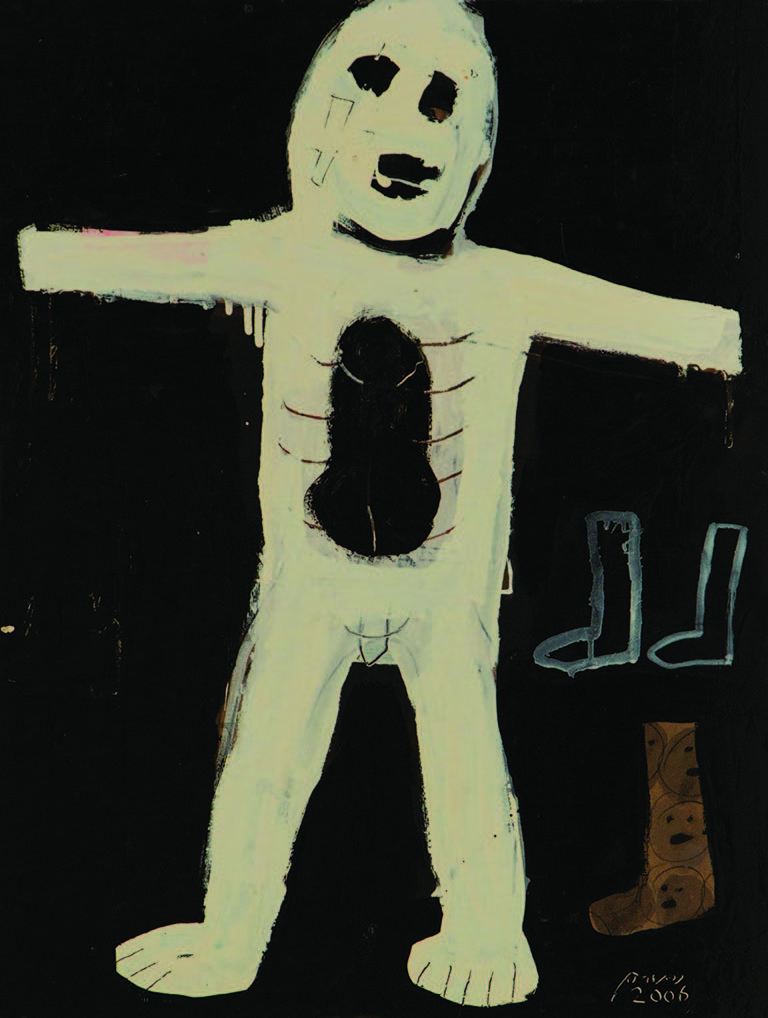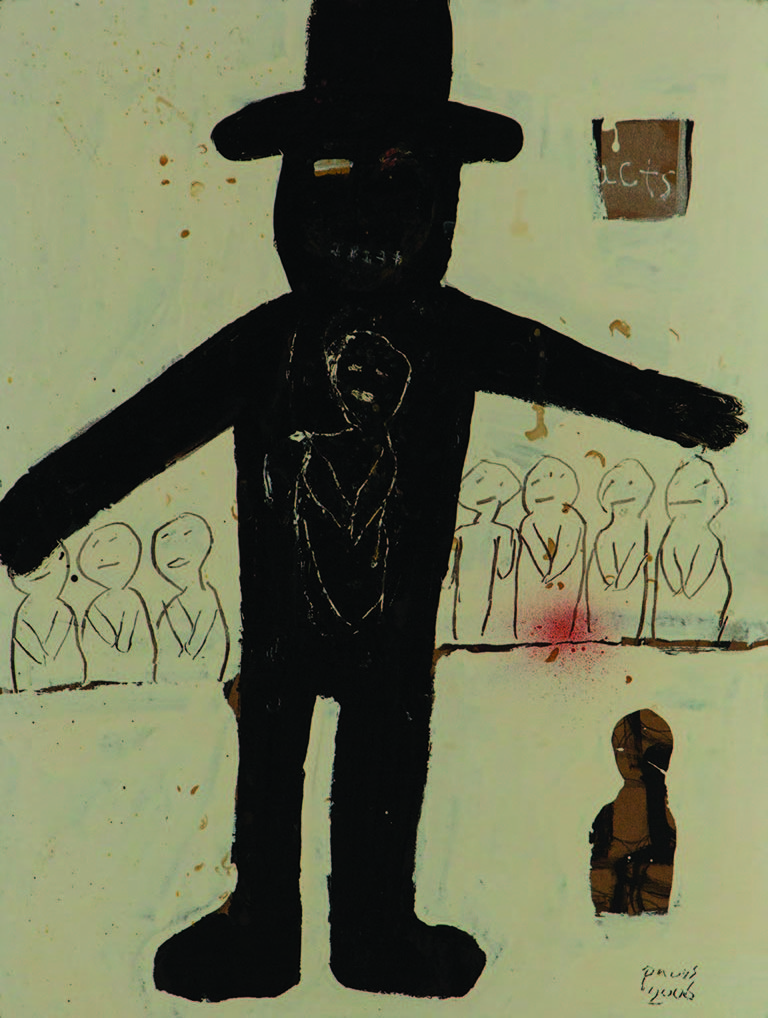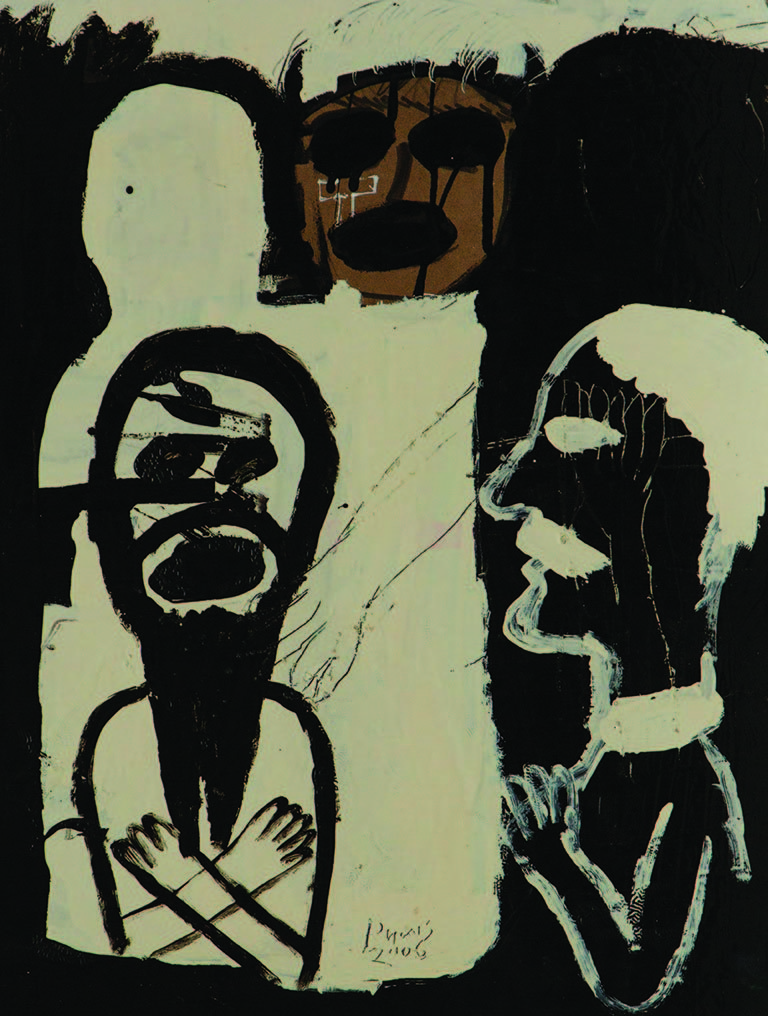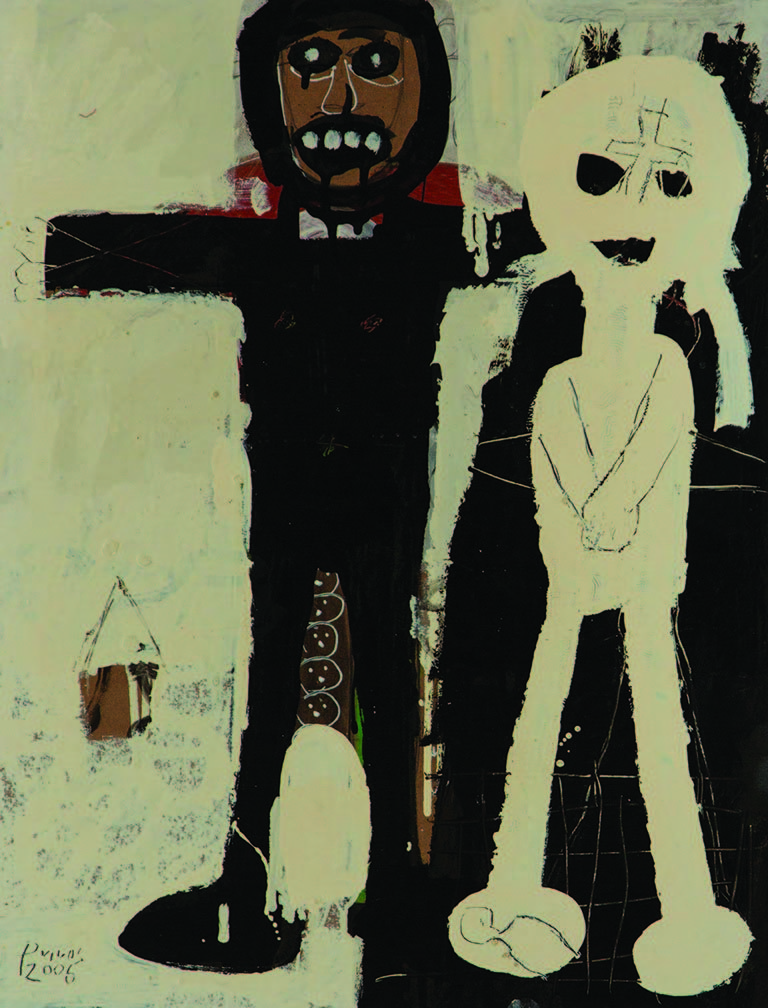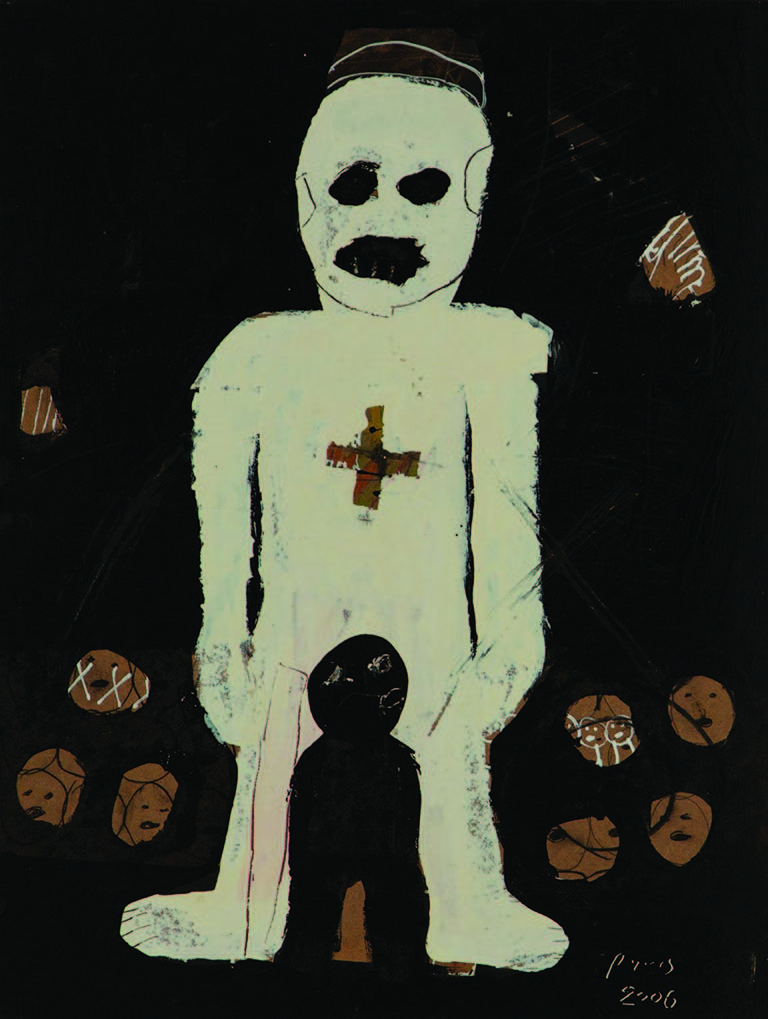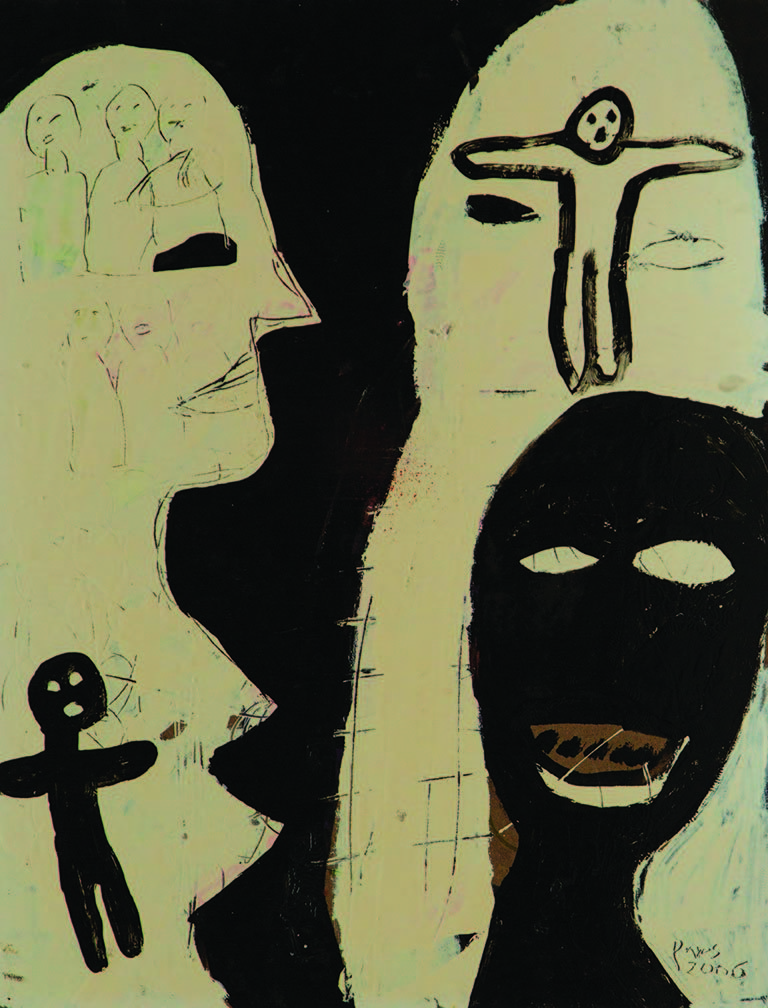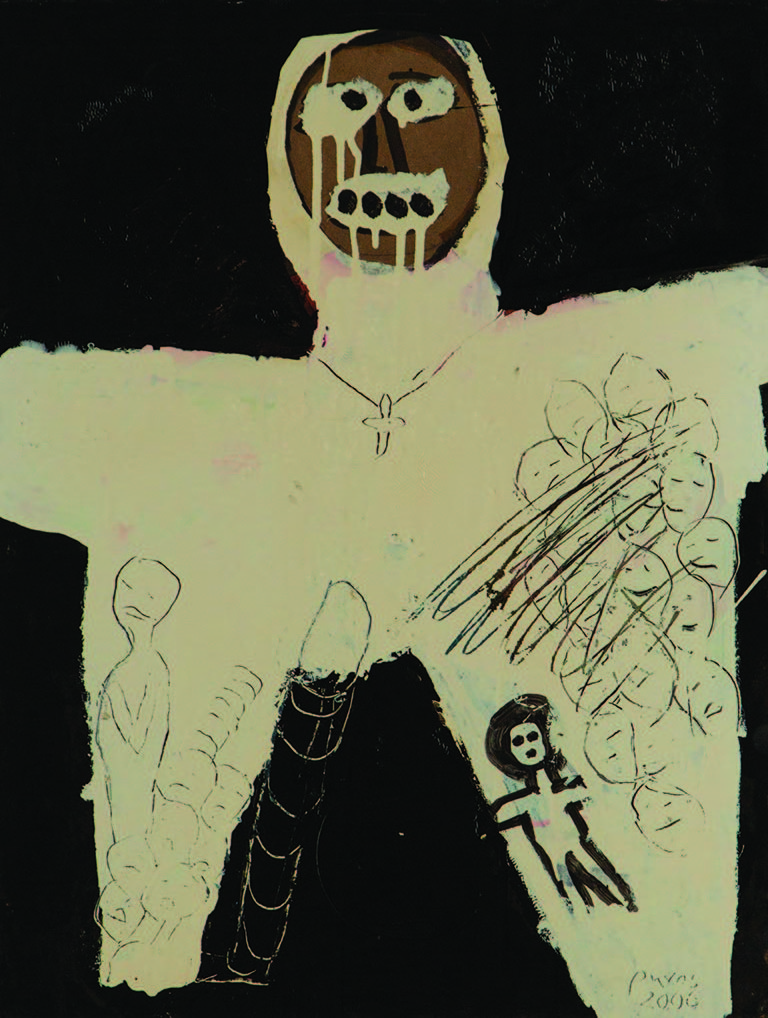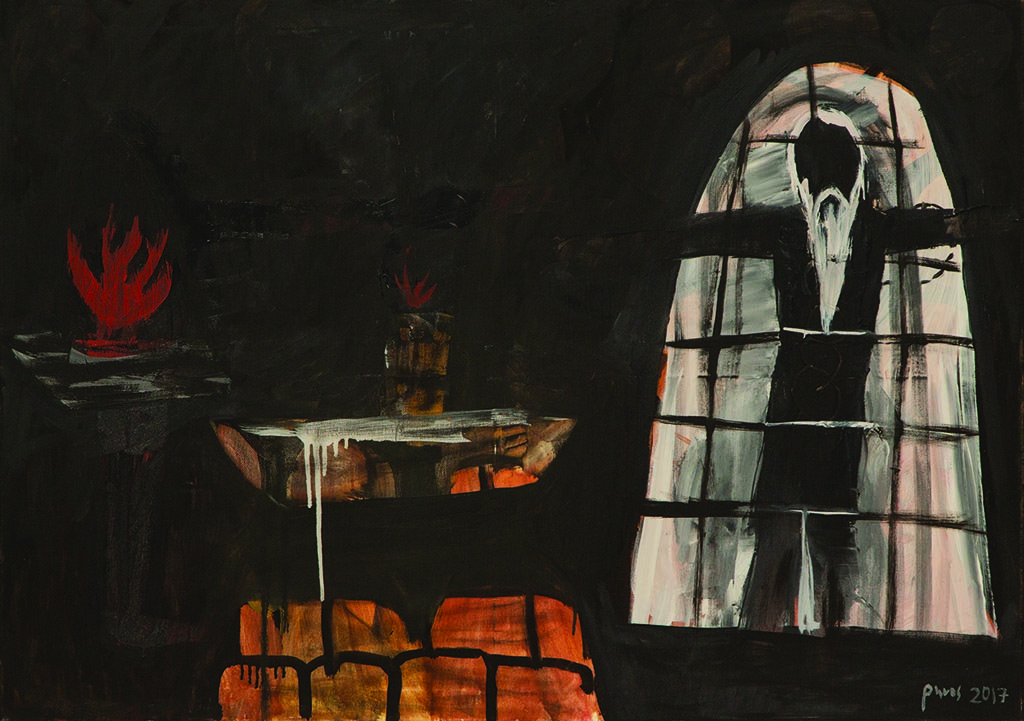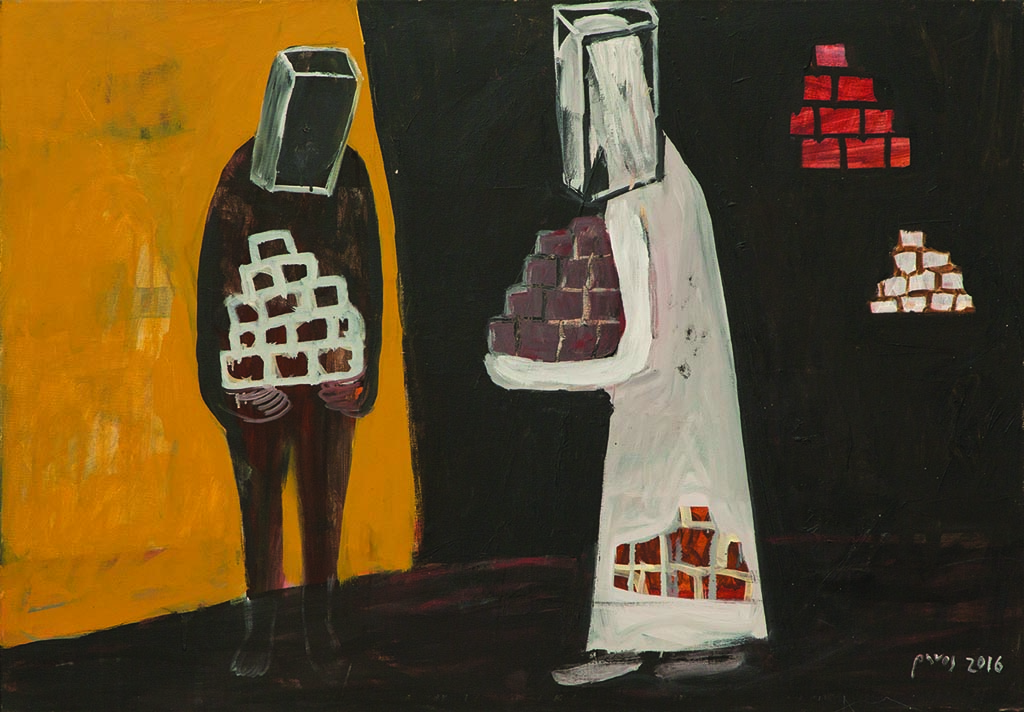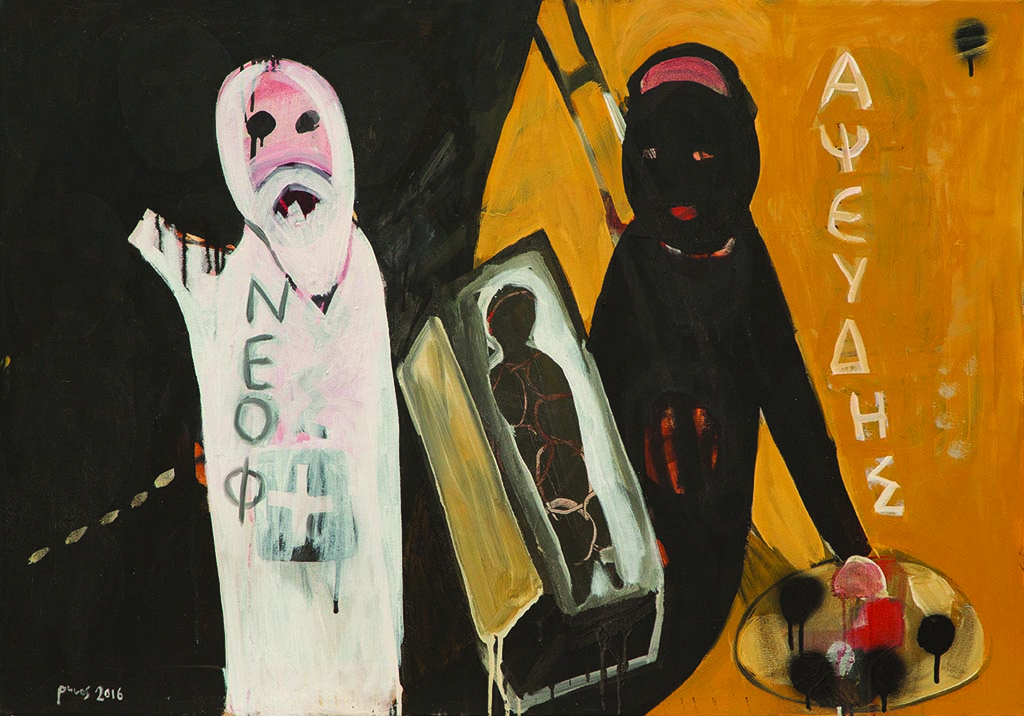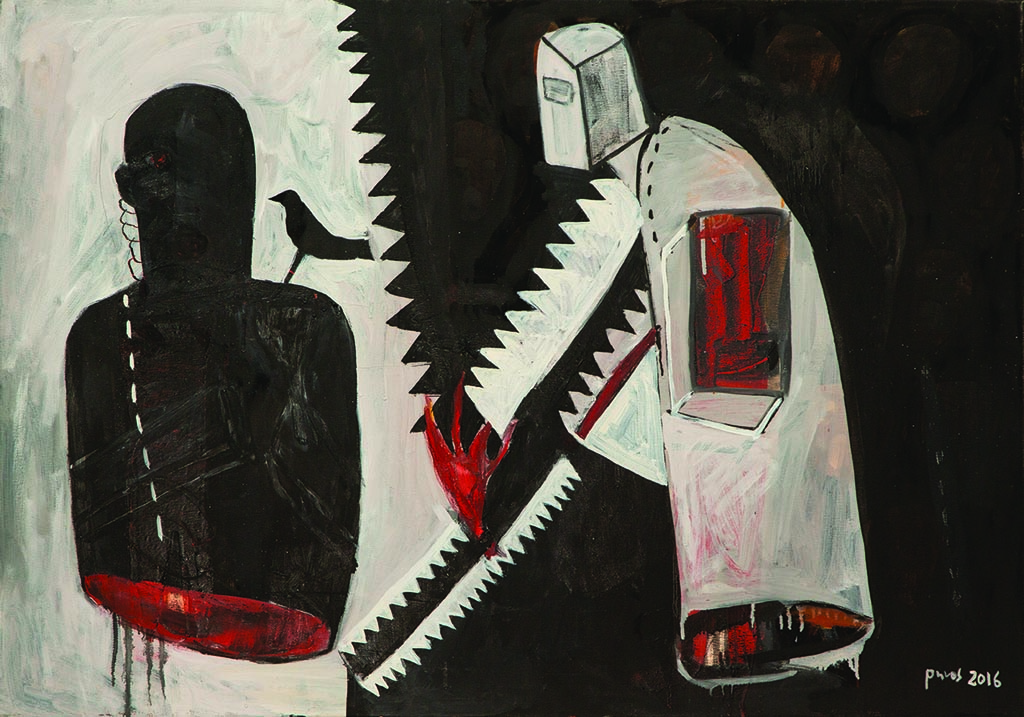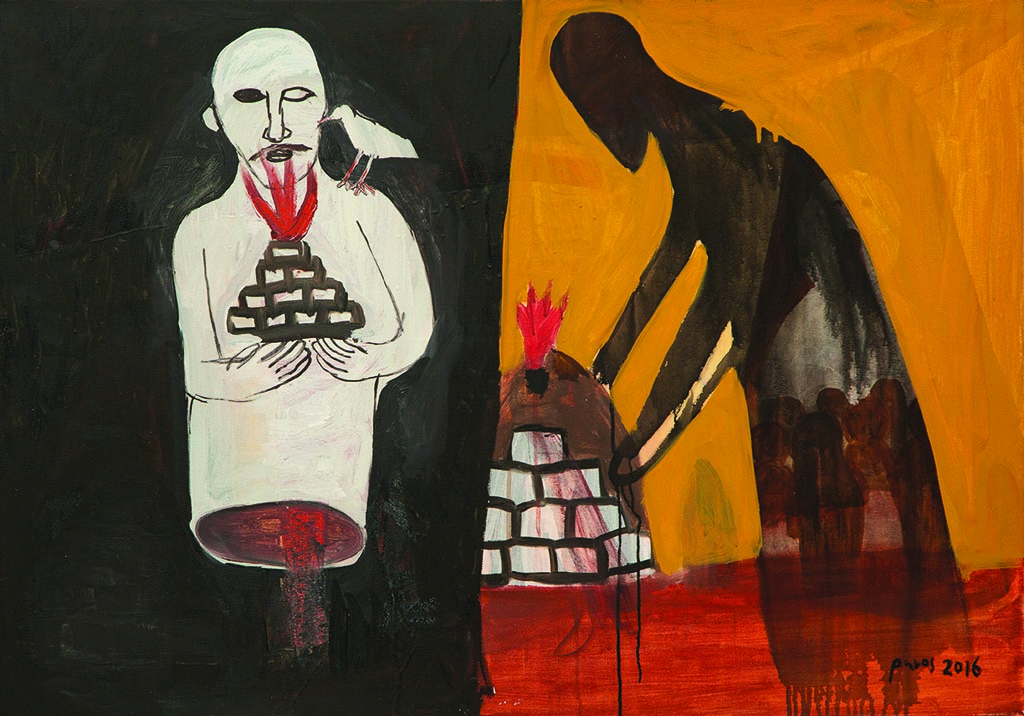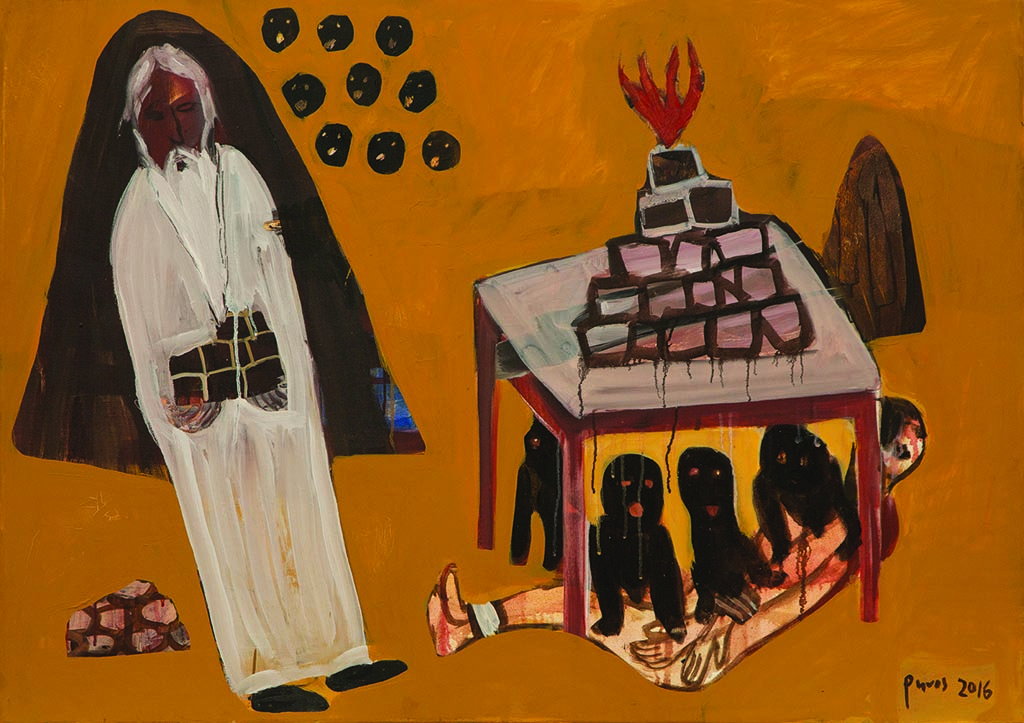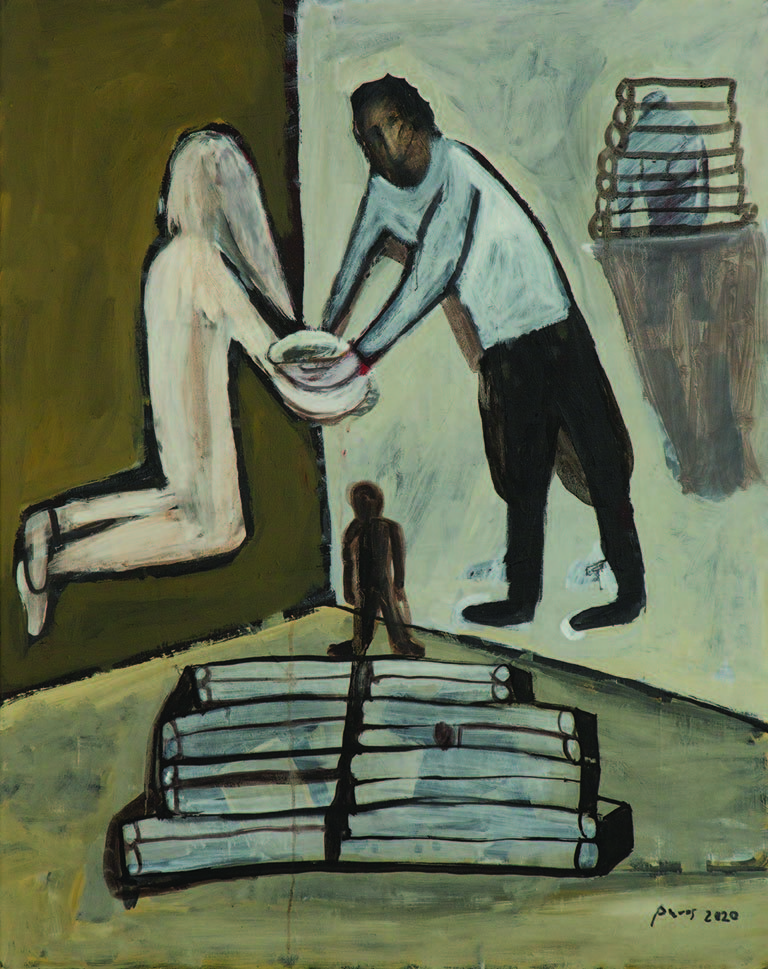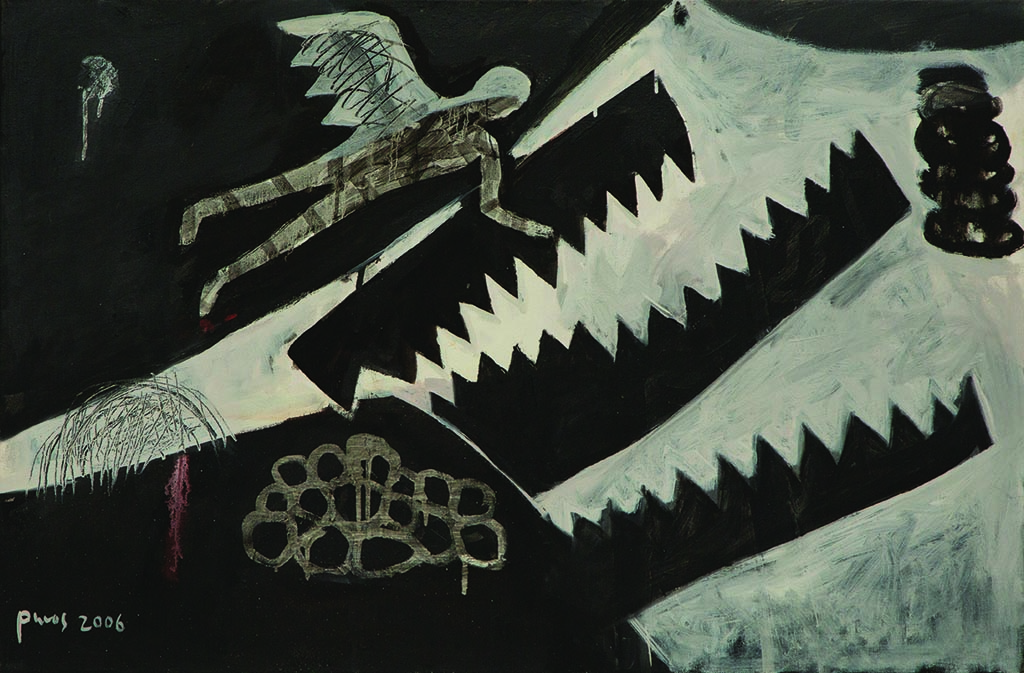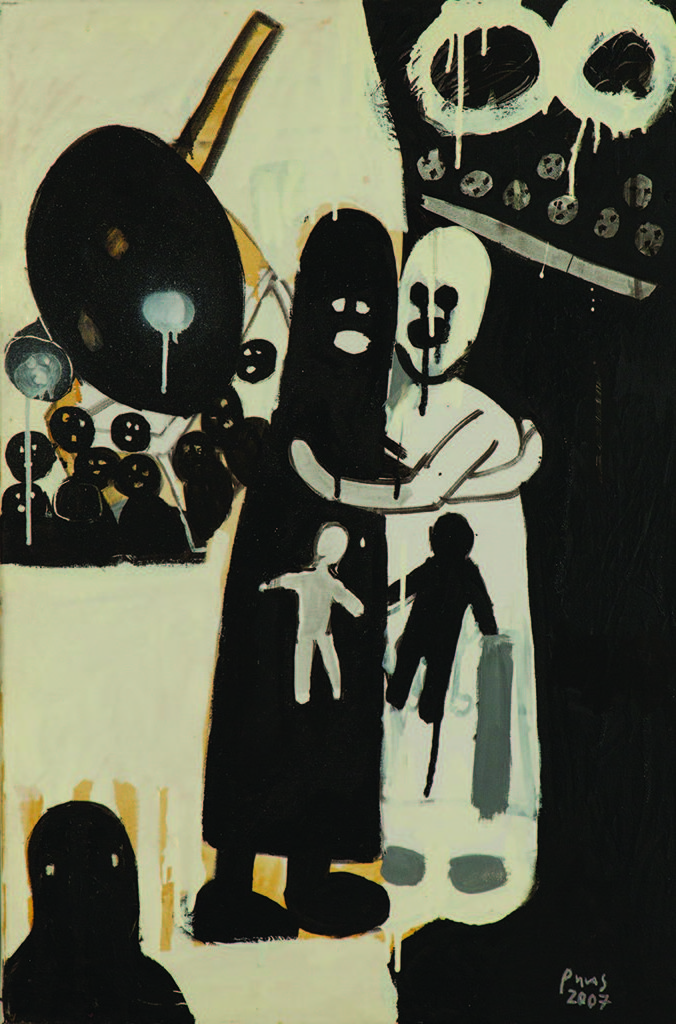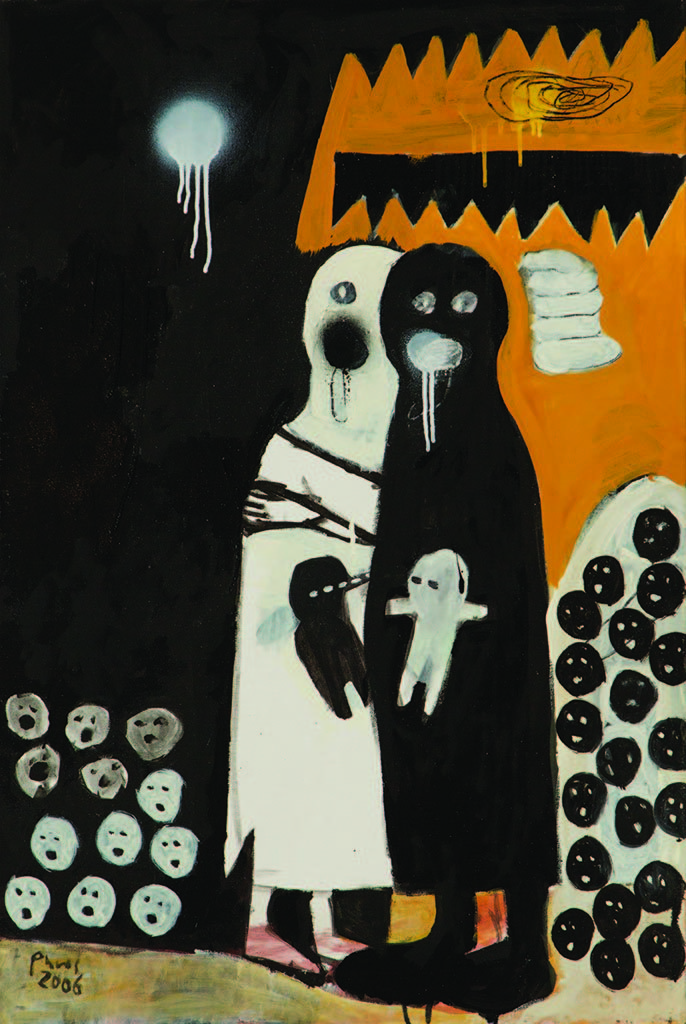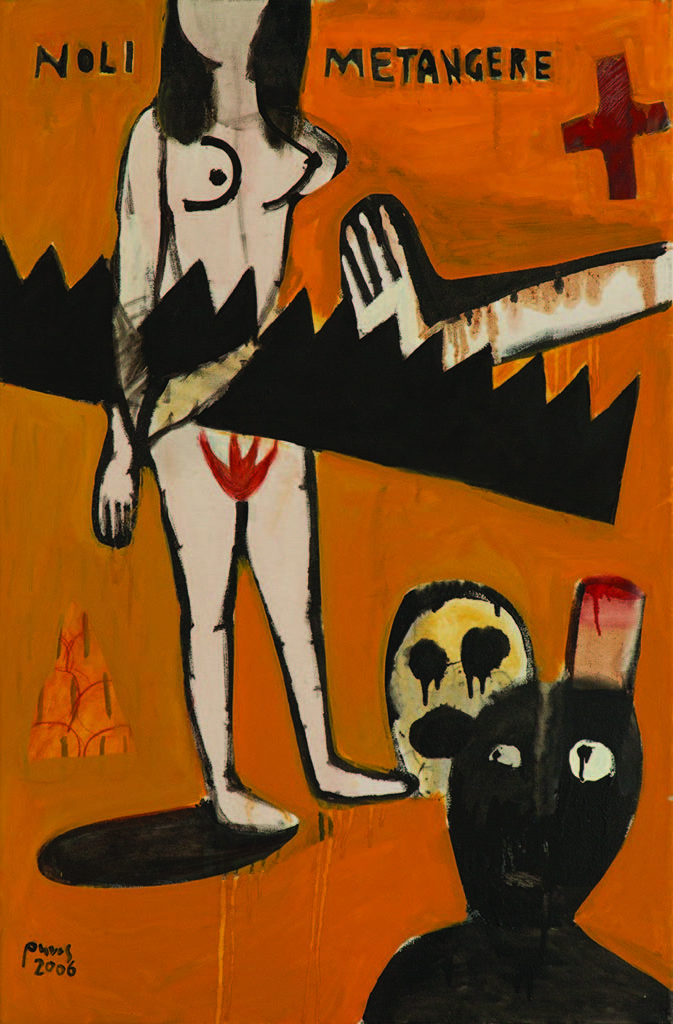Saint Neophytos meets Apsevdis
There are many religious references to the painting of Rinos Stefani. Such a series was presented for the first time at the Chiaki Kamikawa Art Gallery in Paphos in May 2018 with the title “Saint Neophytos meets Apsevdis “.
The Archangels arrest Saint Neophytos
The idea of such a theme came out due to a peculiar incident that happened when Stefani was a child. The source of inspiration was the frescoes in the Engleistra of Saint Neophytos Monastery, near Paphos. These frescoes were made by the 12th century painter Theodoros Apsevdis. Stefani, as a child, was often visiting the Monastery, as it was very close to his village, and wondered about the paintings. What mainly fascinated him was a scene depicting the Archangels Michael and Gabriel to lead the Saint to Christ, in the Day of Judgment. The medieval
painter presents the Archangels with a stern expression firmly holding the frightened and helpless Saint Neophytos by the shoulders. Stefani then imagined that the two Archangels arrest Saint Neophytos … Note that the painter Apsevdis lived at the same time as Saint Neophytos, who ordered the frescoes and supervised the hagiography
Stefanis’ decision to paint Saint Neophytos and Apsevdis
As the artist himself confessed to me, this misunderstanding about the Saint “arrested” by the Archangels often swirled in his mind. On the one hand he found this incident comical; on the other he felt that there was something inexplicable that piqued his curiosity. Maybe the misunderstanding was for a purpose, did it hide some metaphysical meaning? Stefani imagined the painter Apsevdis and Saint Neophytos having philosophical discussions. They talked about life and death, heaven and hell and about God. They also discussed the political situation in Cyprus. They talked about Isaac Komnenos, the Byzantines and the Franks, Richard the Lionheart and the crusaders. And they would probably disagree on several issues. In 2006, Stefani wanted to face this riddle. He decided to create a series of paintings about Saint Neophytos and Apsevdis. This is how the 18 black and white paintings emerged. At that time, Stefani was teaching at the regional High School of Pyrgos, Tillyria. The paintings were made with industrial paint on 60×45 cm fiberboard. The compositions are made in frugal flat areas of color. The figures of Saint Neophytos and Apsevdis are simplified with bold brushstrokes and there is some texture with scratches on the surface. It was an experiment with several technical difficulties, mainly due to the material. Ten years later, in 2016, Stefani is doing a second cycle of paintings that
re-examines the same subject with a different approach. It consists of a dozen paintings, oil on canvas 70×100 cm.
Saws, flames and piles of stones
The subject for Stefani is a pretext and a reason for exploration. And he has proved that he is a bold and adventurous explorer. His childhood experiences – as in all creators – play a catalytic role in his work. It seems that his desire to deal with the theme of Saint Neophytos and Apsevdis comes from a strong inner need. The need to discover the metaphysical essence of his existence in space-time, to touch his roots and culture. Saws, flames, piles of stones and tree trunks, crosses, masses of human heads, are images that are repeated in his work. It is obvious that many of these motifs were organically integrated into his painting as a result of his experiential
relationship with the earth, nature and people. Equally important source, however, is his close contact and careful observation of the Byzantine Art of Cyprus. Stefani enriches his artistic language by utilizing and transforming artistic codes of Byzantine painting. The influence of Byzantine art on his work is not always obvious. It is often covered under the deliberate brutality in the handling of its material. It is hidden behind the dynamic gesture of the brushstroke and his unique expressionistic style. Rinos Stefani approaches the subject with a critical disposition, sometimes with humour and at the same time with respect. The religious theme becomes a challenge and a source of new narratives that give him the opportunity to unleash his imagination.
The Saint dances zeibekiko
In these paintings, Stefani uses again the metaphorical figure of the Dancer. He puts painter Apsevdis and Saint Neophytos to dance zeibekiko. These works have something in common with two other series of his work, “Exographies” and “A Thousand Drawings of Hell”, with compositions that reflect our concerns on contemporary issues of violent conflicts and war, of terrorism and the waves of movement and violent uprooting of people. But they also reflect the anxiety about the ecological disaster that man causes in the environment. Beneath the surface of his work there are other layers that one must discover and reveal. His painting language has a sense of freshness and primitive vitality
Key features in Stefani’s work
In Rinos Stefani’s approach one can identify certain key features:
He often chooses his subject in dialogue with a biblical
scene. He examines in detail the subject – image (content and format as well as historical context).
He associates a specific biblical story with his own experience and art. He introduces images and symbols from his previous work in his composition and incorporates personal stories that suit his temperament and aesthetic philosophy.
He struggles to give visual expression to his ideas, which often conflict with established social beliefs and ideologies. He is aware of the danger, but considers risk an integral part of his art. He invents images that have sarcasm and humour. It challenges and at the same time respects tradition. How are both done? By utilizing the “unity and conflict of opposites”. Perhaps the most typical example is his work is the “Dancer”
The Dancer – usually in black and white – is a powerful metaphor that Stefani has been using for years. It is an ambiguous image but also has a double meaning. The artist examines the two opposites and explores their dialectical relationship (light – darkness) as two inseparable parts of the same entity or phenomenon. Through this contradictory but also complementary relationship he evokes the existential dipole of life and death. In other words, it touches on metaphysical questions of man. As a sensitive receiver, but also a transmitter, he struggles to understand the course of humanity. At the same time it leaves a hint of an optimistic outlook. The Dancer of Stefani is an image of Crucifixion and Resurrection.
Caroline Frances, poet
Ohio 2017
